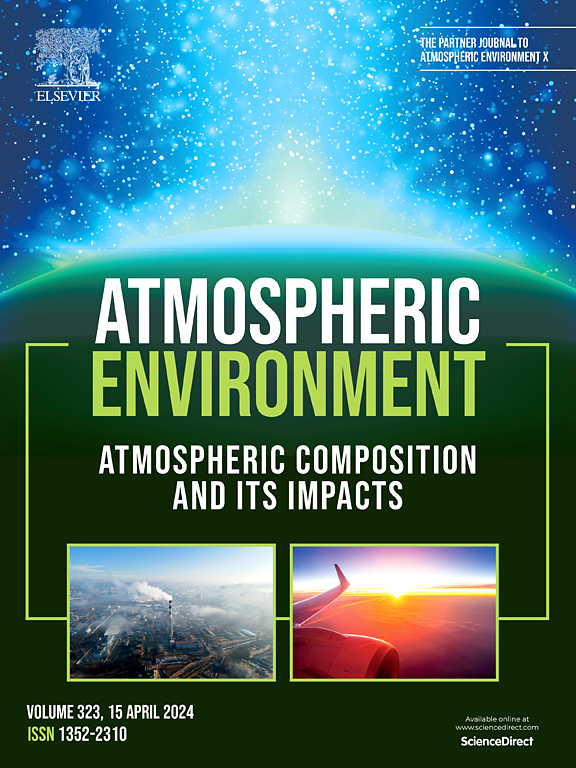加拿大西部某地区18年PM2.5每日预测(2005-2022年):用于农村卫生的机器学习和卫星输入
IF 4.2
2区 环境科学与生态学
Q2 ENVIRONMENTAL SCIENCES
引用次数: 0
摘要
不列颠哥伦比亚省东北部是加拿大西部的农村和偏远地区,非常规油气开发(UOGD)正在快速发展,野火影响日益严重。空气质量是该地区社区关注的问题,但空气污染监测非常有限。为了解决这一差距,本研究探索了机器学习在现代研究与应用回顾性分析第2版(MERRA-2)中基于卫星的气溶胶和气象估计中的应用,以在与正在进行的健康研究相关的空间和时间分辨率上估计每日细颗粒物(PM2.5)。随机森林模型在2013年至2022年的地面空气质量监测网络上进行了训练和验证,然后用于2005年至2022年研究区域50公里分辨率的日浓度预测和反演。然后将这些预测与全球和省级卫生指南进行比较,并分析年度趋势。我们的模型获得了10倍交叉验证,均方根误差(RMSE)和R2分别为3.89 μg/m3和0.77,检验分数分别为3.02 μg/m3和0.78。2006年至2021年间,PM2.5超标天数增加了122%,超标人次增加了166%。在我们的空间分辨率下,我们发现与UOGD相比,野火是预测PM2.5日浓度的更重要变量。我们展示了卫星再分析产品在加拿大农村地区最少地面监测站估计地面PM2.5的应用。本文章由计算机程序翻译,如有差异,请以英文原文为准。

Eighteen years of daily PM2.5 predictions (2005–2022) for a region of western Canada: Machine learning and satellite inputs for applications in rural health
Northeastern British Columbia is a rural and remote region in Western Canada that is experiencing rapid growth in unconventional oil and gas development (UOGD) and increasingly severe wildfire impacts. Air quality is a concern for the communities in the region, but there is very limited air pollution monitoring. To address this gap, this study explores the application of machine learning to the satellite-based estimates of aerosols and meteorology from the Modern-Era Retrospective analysis for Research and Applications, Version 2 (MERRA-2) to estimate daily fine particulate matter (PM2.5) at a spatial and temporal resolution relevant for ongoing health studies. The random forest model was trained and validated on the ground-level air quality monitoring network from 2013 to 2022 and then used to predict and backcast daily concentrations in the study area at a 50-km resolution from 2005 to 2022. The predictions were then compared to global and provincial health guidelines and analyzed for annual trends. Our model achieved a 10-fold cross validation root mean square error (RMSE) and R2 of 3.89 μg/m3 and 0.77, and test scores of 3.02 μg/m3 and 0.78. Between 2006 and 2021, the number of days exceeding PM2.5 guidelines increased by 122 %, and the person-days exceeding the guideline increased by 166 %. At our spatial resolution, we find that wildfire is a more important variable in predicting daily PM2.5 concentrations compared to UOGD. We demonstrate the application of satellite reanalysis products to estimate ground-level PM2.5 in a rural area of Canada with minimal ground monitoring stations.
求助全文
通过发布文献求助,成功后即可免费获取论文全文。
去求助
来源期刊

Atmospheric Environment
环境科学-环境科学
CiteScore
9.40
自引率
8.00%
发文量
458
审稿时长
53 days
期刊介绍:
Atmospheric Environment has an open access mirror journal Atmospheric Environment: X, sharing the same aims and scope, editorial team, submission system and rigorous peer review.
Atmospheric Environment is the international journal for scientists in different disciplines related to atmospheric composition and its impacts. The journal publishes scientific articles with atmospheric relevance of emissions and depositions of gaseous and particulate compounds, chemical processes and physical effects in the atmosphere, as well as impacts of the changing atmospheric composition on human health, air quality, climate change, and ecosystems.
 求助内容:
求助内容: 应助结果提醒方式:
应助结果提醒方式:


